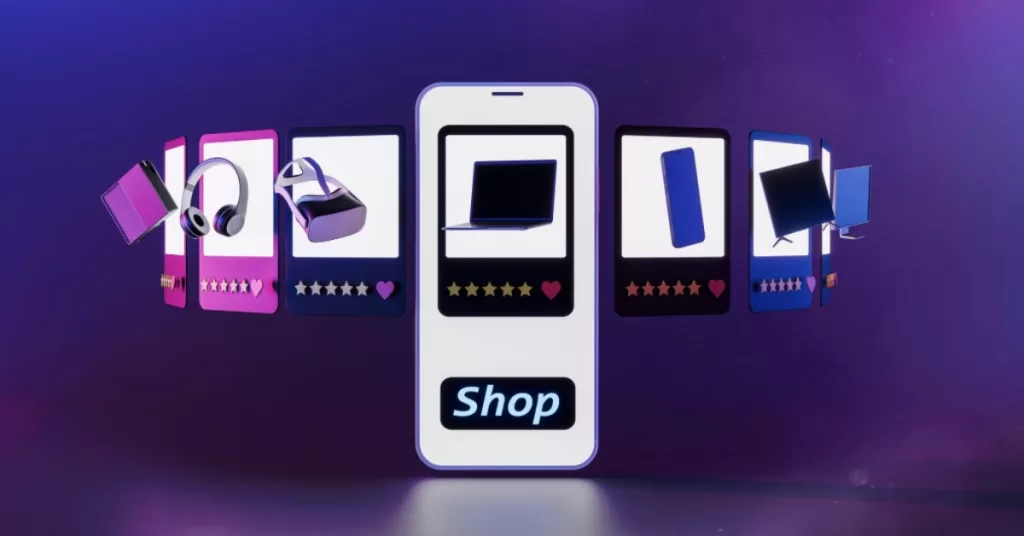Every business must learn the critical skill of dealing with unhappy customers. These scenarios can be high-stress but also high-reward. When customers express discontent, they are offering a form of feedback that, when handled correctly, can lead to loyalty and help pinpoint what can be improved in your service or product.
Resolving conflict is not easy. It requires a blend of negative and positive empathy, a bit of psychology, and a few simple but effective negotiation techniques. It also helps to have a good ear and an open mind so you can understand what the customer is really upset about.
After all, not every complaint is about the surface issue that’s being brought up. Uncovering the real reason behind the complaint is step one. And that’s only if you can keep yourself and the customer calm enough to get to the root cause.
Let’s talk about 7 tactics that helped me deal with unhappy customers.
Stay Calm and Listen Actively
When dealing with an upset customer, the most important first step is to handle your own emotions. It is essential to stay calm, cool, and collected; you have to ‘hold their space’ and let them lay their cards on the table. The more information you have about the context, the better your chances to resolve the situation.
Psychology Insight: Emotional Contagion
Emotional contagion is a well-known phenomenon in psychology. It occurs when one person’s emotion “infects” another person.
For example, if you are calm while serving an upset customer, it is likely that your calmness will “transfer” to the customer. When you are calm, you give off a kind of vibe that can actually make another person feel and act similarly.
So serving a customer while being calm is already an effective way of serving a customer.
Practical Tip: Active Listening
Demonstrate empathy and understanding by using active listening. Give the customer an uninterrupted space to speak. When they have finished, paraphrase their message, making sure to convey the essence of what they said.
This confirms that you truly heard and understood their concern. It also shows that you are engaged and taking their issue seriously.
Negotiation Tactic: The Power of Silence
In negotiating, silence can be a strong tool. Let the customer get all their “this is such a frustrating situation” stuff out of their system before you express any words of your own.
Letting them talk is not only to your advantage strategically but also allows the customer to feel like they are on the path toward being understood. Once they have gotten past the moment of exterior frustration, they are usually much more able to be receptive to your part of the conversation.
Acknowledge Their Feelings
After listening, it is essential to recognize the emotions of an unhappy customer. Customers don’t want to just to be heard but also to be understood. The straightforward practice of acknowledging their feelings can release built-up energy and start the trust-rebuilding process.
Psychology Insight: Validation in Conflict Resolution
Conflict resolution hinges on a simple component: validation. When someone feels validated, their brain releases oxytocin. This is a hormone that promotes trust and connection.
This is why the first step to turning a hostile interaction into a friendly one is to make the other person feel heard and understood.
Practical Tip: Use Empathetic Phrases
Saying something like “This must be incredibly frustrating for you” when dealing with an unhappy customer really helps to soothe things over. Note that, these words do not make any admissions of fault or responsibility. They are just showing empathy which goes a long way.
Negotiation Tactic: Labeling Emotions
Chris Voss, a former FBI hostage negotiator, talks about the labeling technique. You can use this to help get the customer’s emotions out on the table in a productive way.
You do this by simply identifying and verbalizing their emotions. For example, you can say ‘It sounds like you’re feeling really frustrated about this situation’. You can use labeling to help your customer express their emotions and, in the process, understand them better.
Apologize and Take Responsibility
Even when a problem is not fully your fault, apologizing can help to calm down an unhappy customer. If the error is on your side, the apology will show that you are taking responsibility. If the fault is on the client, don’t take the blame for it. Instead, apologize as a sign of acknowledgment that something went wrong.
Psychology Insight: The Power of a Sincere Apology
Studies indicate that an apology can engage the brain’s empathy circuits and even help lessen anger. When you apologize to the customer, it will signal that you are not trying to evade responsibility. Moreover, it will show that you are focused on finding a solution to their problem.
Practical Tip: Differentiate Between Apology and Responsibility
Sometimes, you might want to apologize, but not take responsibility for the problem. Maybe the fault is completely on the customer’s side and it has nothing to do with your product or service.
So, in this case, you can apologize for the customer’s inconvenience or frustration and bypass the accountability. For example, you can say something along the lines of ‘I’m really sorry this happened. Let’s find a solution that works for you’.
Negotiation Tactic: Anchoring with an Early Apology
In negotiation, anchoring refers to our tendency to give more weight to the information presented at the beginning of the conversation.
This is mostly used for price negotiations. But you can adapt it and use this with unhappy customers. If you use an apology strategically at the beginning of the conversation, you can set a positive tone and jump to the problem-solving part.
Ask Open-Ended Questions to Clarify the Issue
Once the emotional part is settled, you have set the stage for the next steps. It is now time to clarify the problem and get a deeper understanding of what’s going on. This will help you gather all the details you need to solve the issue.
Psychology Insight: The Socratic Method
The Socratic method is an age-old approach that leads people to think deeply and critically. It does this by simply asking questions – lots of them. The aim of these questions is to probe the underlying issue to understand and solve the problem.
Moreover, this will make the customer feel in control of the conversation. And this can turn an angry and unhappy customer into a cooperative one.
Practical Tip: Use Questions to Encourage Dialogue
When asking questions, don’t just go for the yes-or-no ones. These will not give you any valuable information. Instead, try asking them open-ended questions that will dig deeper into the matter. Think of questions that would put things into context and reveal the back story of the issue.
Negotiation Tactic: Calibrated Questions
Chris Voss’s calibrated questions do a phenomenal job when it comes to making the customer think of a solution. An example of this is ‘How can we fix this in a way that works for you?’. Or ‘What can I do to make this right?’. Notice the subtle way in which these questions are putting the customer in the spotlight.
And if you have done the previous steps right and made the customer feel heard and trust you, you will have a very reasonable answer.
Offer a Solution and Focus on What You Can Do
Unhappy customers don’t care about your internal problems; they care about results. They come to you for solutions. So when they have a problem, by all means get the necessary information, but then do something with it. And focus on the things that are in your control.
Psychology Insight: The “Yes” Mindset
In psychology, the “yes” mindset is a technique that moves the conversation from problem-focused language to solution-focused language. The customer may or may not be aware of the reason for their current emotional state. They may be feeling frustrated. You may have noticed that when people are feeling these kinds of emotions, they are not always the most logical thinkers.
Practical Tip: Offer Choices
It is good practice to give customers options, especially when it comes to potentially sensitive issues like a faulty product. In that case, you might say something like, “We can offer you either a replacement, a refund, or store credit.” When you facilitate that many choices, you’re making the customer feel a little more in control.
Negotiation Tactic: The Loss Aversion Principle
The term “loss aversion” in behavioral economics refers to the principle that people are much more affected by losses than by gains of the same size. So if the situation allows it, try to frame the solution to highlight the loss they will prevent. This will make the offer much more attractive.
Provide Immediate and Long-Term Fixes
To completely set things right, present the customer with two remedies—one immediate, the other a long-term solution—so that they know you are correcting the problem now and are also trying to make sure it doesn’t happen again.
Psychology Insight: Instant Gratification vs. Delayed Satisfaction
Individuals tend to value immediate answers because they offer instant satisfaction. On the other hand, providing a long-term solution also meets the need for a change to prevent future problems. It shows that you are listening to them and that you are thinking about what’s best for them.
Practical Tip: Quick Compensation and Preventative Measures
Almost every unhappy customer wants to get some sort of compensation for their troubles. But also, they want to be sure that their problem won’t repeat in the future. And this diffuses an unhappy customer quite fast. One example would be to give a discount or a refund right away, then explain how the company is going to fix the root problem so that this and similar situations don’t happen again.
Negotiation Tactic: Commitment and Consistency
The commitment and consistency principle refers to people’s tendency to behave in a manner that matches their previous actions. This allows them to avoid cognitive dissonance. So, when you are agreeing on a solution, first peasant the short-term fix and ask them if they are happy with it.
After that, proactively offer the long term solution. They will be more inclined to accept it and it will increase the customer satisfaction.
Follow Up to Show You Care
When the problem has been resolved, don’t think your work is done. Checking back with the customer demonstrates you genuinely care about their experience and reinforces your commitment to their satisfaction.
Psychology Insight: The Recency Effect
The recency effect indicates that people are more likely to remember most clearly the events that happened more recently. When we think back over a period of time and try to recall what happened, we are most likely to remember the last few things we experienced.
This is true in business as well, and it suggests that a recent interaction can sometimes matter more than what has happened in the past.
Practical Tip: Personalized Follow-Up
To make sure that the resolution has made the customer happy, it is good to send a personally tailored email or make a phone call. This small act of service demonstrates that you actually care and that you are not just going through the motions.
A genuinely personalized touch is almost always rewarded with a customer who will return at some future point.
Negotiation Tactic: Reciprocity Principle
If people feel they have been treated generously, they are much more likely to respond positively. So by following up and going the extra mile, you can increase the customer’s loyalty. Moreover, you can even ask them for a review in return.
They will be more inclined to share their experience and, most of the time, they won’t even mention they had a problem.
Conclusion
Unhappy customers can be a pain to deal with, but they can also be a source of invaluable information. You can learn what you can do to improve the customer experience and what changes you can make to your processes.
What should you avoid saying to an unhappy customer?
You should avoid being defensive and throwing statements like ‘It’s not our fault’ or ‘That’s just our policy’. These will only make the customer more frustrated and uncooperative.
How do you turn a negative customer experience into a positive one?
By actively listening to the customer, approaching them with empathy, and offering a swift solution, you can quickly diffuse an unhappy customer. Pair this with an unexpected follow-up and you will potentially have turned a negative experience into a raving review.



